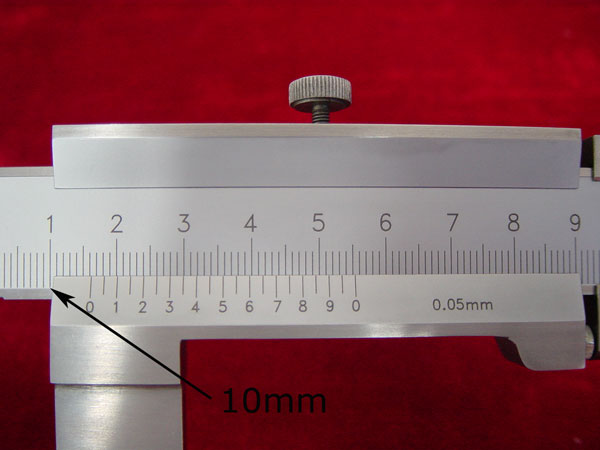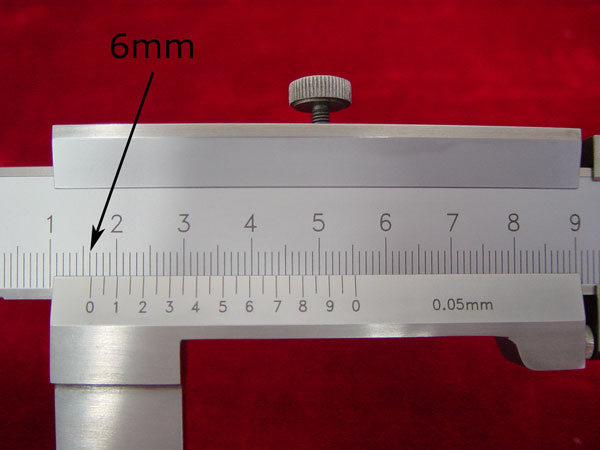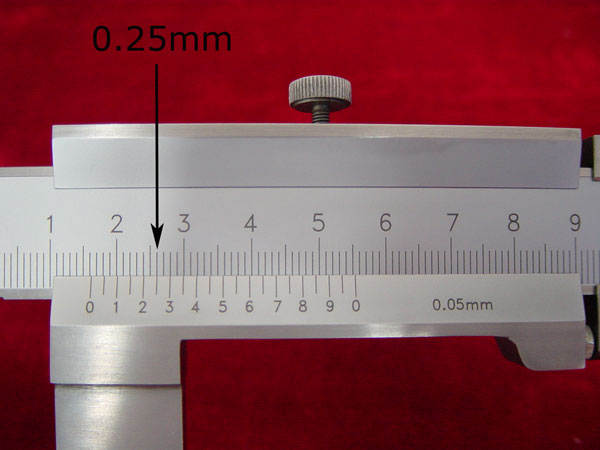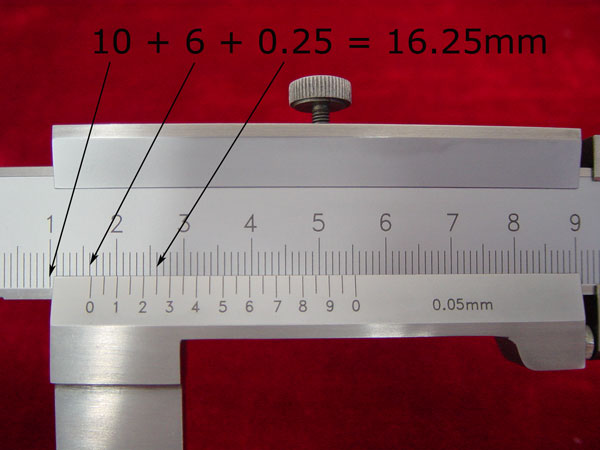1. Gear Tooth Vernier Calipers
2. Vernier Calipers with style jaws (with Fine Adjustment) (Mono-block Vernier)
3. Vernier calipers with Fine Adjustment(Open vernier)
4. Vernier calipers with Fine Adjustment(Mono-block vernier)
5. Vernier Calipers with Nib Style and Standard Jaws (with Fine Adjustment) (Mono –block Vernier)
6. Vernier Calipers (Half-Open Vernier)
7. Left-Hand Parallax-free Plane Vernier Calipers ( Mono-block Vernier)
8. Vernier Calipers ( Open Vernier)
9. Parallax-free Plane Vernier Calipers ( Open Vernier)
10. Carbide-tipped Jaw Type Vernier Calipers (Mono-Block Vernier)
11. Inside groove vernier calipers with flat points
12. Disc brake vernier calipers
13. Vernier Calipers with Nib Style and Standard Jaws (with Fine Adjustment)(Open vernier)
14. Vernier Calipers with Nib Style and Sharp Edged Jaws( with Fine Adjustment)( Mono-bock vernier)
15. Knife-Point Inside Groove Vernier Calipers( Open frame type)
16. Vernier Calipers with Nib Style Jaws (with Fine Adjustment)(Open Vernier)
17. Vernier Calipers with Nib Style Jaws( with Fine Adjustment)(Mono-block Vernier)
18. Mono-block Vernier Calipers with Thumb Lock
19. Parallax-free Plane Vernier Calipers (Mono-block Vernier)
20. Parallax Free Plane-Vernier Caliper
21. Vernier Calipers(Mono-block Vernier)
VERNIER CALIPER
A precision measuring instrument that measures inside and outside dimensions. Not quite as accurate as a micrometer, but more convenient
Thursday, September 30, 2010
Types of vernier caliper
Let's look more into the various types of calipers. As I mentioned before there are basically calipers measured for external dimensions and internal dimensions. Vernier Calipers is caliper with a vernier scale to enhance the ability of a caliper to measure precise dimensions. In today's market Vernier Calipers with dial and digital read out are commonly available. Based on this let's list out the various types of calipers and vernier calipers available.
- Inside caliper
- Outside caliper
- Divider caliper
- Vernier Calipers
- Dial Vernier caliper
- Digital Vernier caliper
Tuesday, September 28, 2010
How to use a Vernier Caliper
How to use and read a vernier caliper?
An ordinary vernier caliper has jaws you can place around an object, and on the other side jaws made to fit inside an object. These secondary jaws are for measuring the inside diameter of an object. Also, a stiff bar extends from the caliper as you open it that can be used to measure depth.The basic steps are as follows:
1. Preparation to take the measurement, loosen the locking screw and move the slider to check if the vernier scale works properly. Before measuring, do make sure the caliper reads 0 when fully closed. If the reading is not 0, adjust the caliper’s jaws until you get a 0 reading. If you can’t adjust the caliper, you will have to remember to add to subtract the correct offset from your final reading. Clean the measuring surfaces of both vernier caliper and the object, then you can take the measurement.
2. Close the jaws lightly on the item which you want to measure. If you are measuring something round, be sure the axis of the part is perpendicular to the caliper. Namely, make sure you are measuring the full diameter. An ordinary caliper has jaws you can place around an object, and on the other side jaws made to fit inside an object. These secondary jaws are for measuring the inside diameter of an object. Also, a stiff bar extends from the caliper as you open it that can be used to measure depth.
3. How to read the measured value:
1), Read the centimeter mark on the fixed scale to the left of the 0-mark on the vernier scale. (10mm on the fixed caliper)

2). Find the millimeter mark on the fixed scale that is just to the left of the 0-mark on the vernier scale. (6mm on the fixed caliper)

3). Look along the ten marks on the vernier scale and the millimeter marks on the adjacent fixed scale, until you find the two that most nearly line up. (0.25mm on the vernier scale)

4). To get the correct reading, simply add this found digit to your previous reading. (10mm + 6mm + 0.25mm= 16.25 mm)

4.Maintenance
Clean the surface of the vernier caliper with dry and clean cloth (or soak
Thursday, September 23, 2010
History of vernier calipers
The vernier caliper , invented by the French scientist Pierre Vernier(1580-1637), is a well-known tool for high-resolution length measurements . The caliper consists of two graduated scales , a main scale like a ruler and a second scale , the vernier , which slides parallel to the main scale . The two scales have a small relative prich difference, e.g. 1/20. In other words , any change in position is enhanced by a factor equal to the inverse of the relative pitch difference.
Vernier Caliper

Instructions on use
- The Vernier caliper is an extremely precise measuring instrument; the reading error is 1/20 mm = 0.05 mm.
- Close the jaws lightly on the object to be measured.
- If you are measuring something with a round cross section, make sure that the axis of the object is perpendicular to the caliper. This is necessary to ensure that you are measuring the full diameter and not merely a chord.
- Ignore the top scale, which is calibrated in inches.
- Use the bottom scale, which is in metric units.
- Notice that there is a fixed scale and a sliding scale.
- The boldface numbers on the fixed scale are centimeters.
- The tick marks on the fixed scale between the boldface numbers are millimeters.
- There are ten tick marks on the sliding scale. The left-most tick mark on the sliding scale will let you read from the fixed scale the number of whole millimeters that the jaws are opened.

- In the example above, the leftmost tick mark on the sliding scale is between 21 mm and 22 mm, so the number of whole millimeters is 21.
- Next we find the tenths of millimeters. Notice that the ten tick marks on the sliding scale are the same width as nine ticks marks on the fixed scale. This means that at most one of the tick marks on the sliding scale will align with a tick mark on the fixed scale; the others will miss.
- The number of the aligned tick mark on the sliding scale tells you the number of tenths of millimeters. In the example above, the 3rd tick mark on the sliding scale is in coincidence with the one above it, so the caliper reading is (21.30 ± 0.05) mm.
- If two adjacent tick marks on the sliding scale look equally aligned with their counterparts on the fixed scale, then the reading is half way between the two marks. In the example above, if the 3rd and 4th tick marks on the sliding scale looked to be equally aligned, then the reading would be (21.35 ± 0.05) mm.
- On those rare occasions when the reading just happens to be a "nice" number like 2 cm, don't forget to include the zero decimal places showing the precision of the measurement and the reading error. So not 2 cm, but rather (2.000 ± 0.005) cm or (20.00 ± 0.05) mm.
Subscribe to:
Posts (Atom)